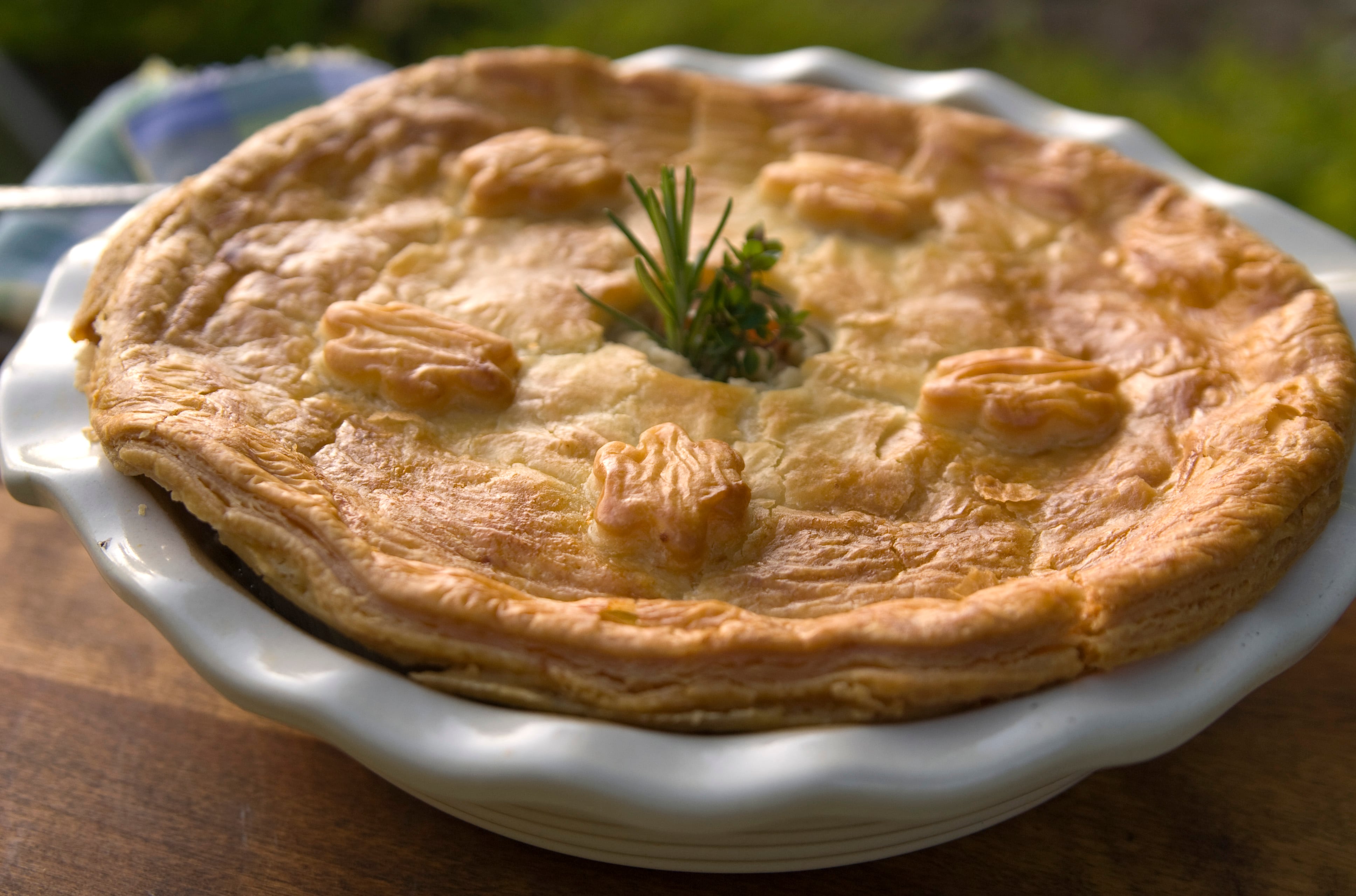As winter recedes into the distance and the heating dial is turned down a little, the on-trade (and customers) begin to seek out those drinks that are synonymous with sunshine and coming of warmer weather.
Promotional content
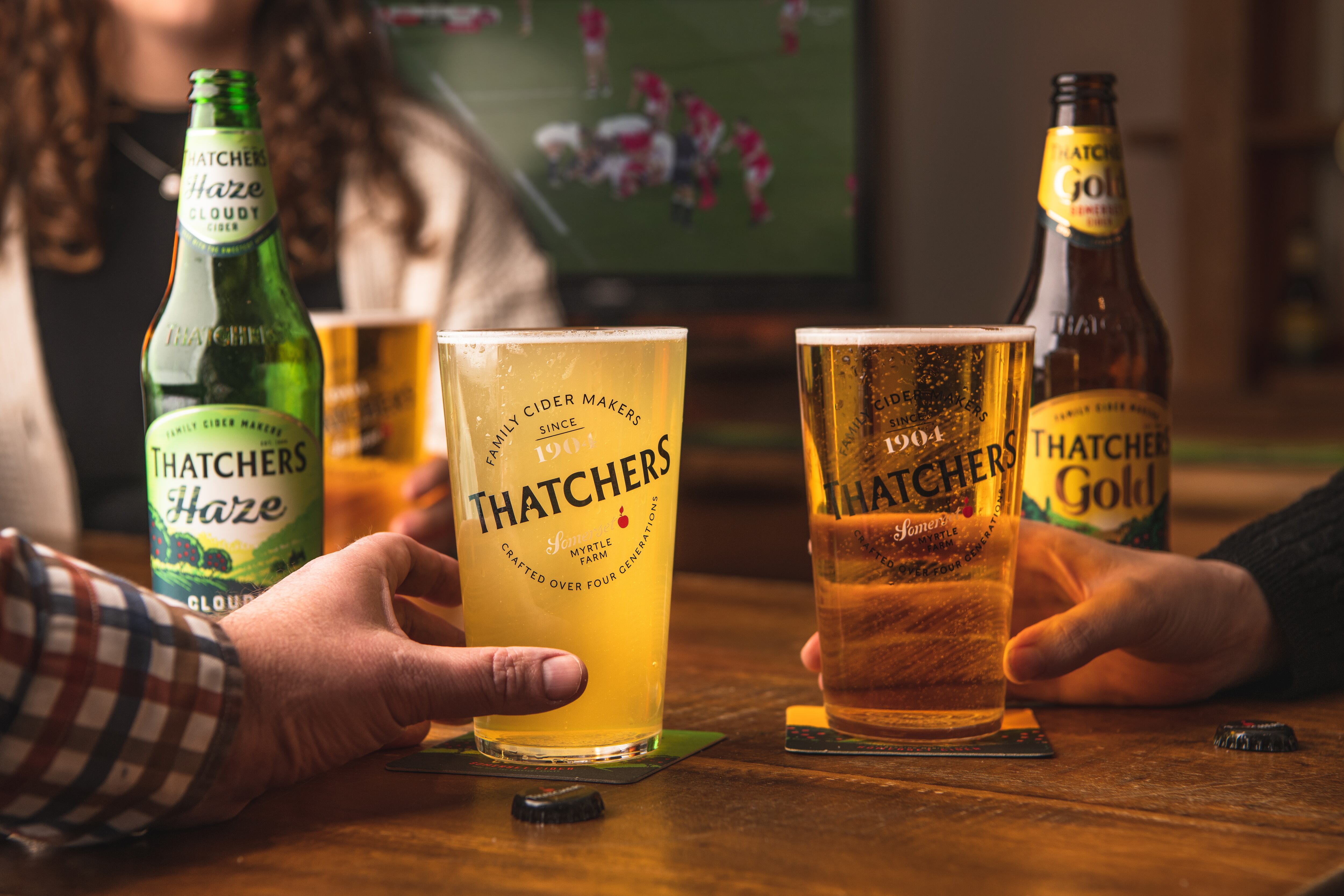
Make the most of afternoons and evenings with Thatchers
With warmer weather on the way, and people looking to make the most of afternoons and evenings[1], demand is being driven for delicious, sessionable and easy drinking options, with cider being the perfect solution.
Stocking a recognised, trusted brand can add 54 pints to weekly sales[2]. Thatchers Gold is the No.1 choice for apple cider drinkers[3], outperforming leading brands on taste, flavour, and easy drinking[4], making it an excellent choice for increasing rate of sale and driving cash in the till.
Thatchers is home to four generations and 120 years of expertise in crafting the perfect pint. Only when the Thatcher family are 100% happy will the cider leave the farm. That expertise has enabled them to deliver the biggest innovations in cider year after year. From Thatchers Blood Orange and Apple & Blackcurrant to their latest release, Thatchers Juicy Apple, which is bringing new audiences to the category.
With 74% saying they’re moderating, and 70% of cider sales being apple, you don’t want to miss out on low/no opportunities by only stocking fruit options. Thatchers Zero, the No.1 low/no apple cider, was crafted through two years of careful development by expert cidermakers. Made with a perfect blend, Zero delivers a full-bodied, satisfying cider. Available in both packaged and draught formats, it’s ideal for those who want to moderate without compromising on taste.
For more information click here to see how Thatchers can help your pub or bar.
[1] CGA OPMS P01 2025
[2] CGA OPMS P04 2024 Lowest apple (Orchard Pig vs Thatchers Gold)
[3] CGA brand track, AUG 20204
[4] Savanta Dec 2024
Cider is certainly at the forefront of that, as the data will attest, although I would like to champion the fact cider can be drunk all year round and is a fabulous wintry drink, too.
Cider finds itself in a tricky position in the pub. The on-trade is under such considerable pressure that many publicans, naturally, will stick to what they know and give focus and priority to trusted favourites in mainstream and flavoured cider. But this comes at a time when the number of quality producers and ciders available to the trade is greater than ever before.
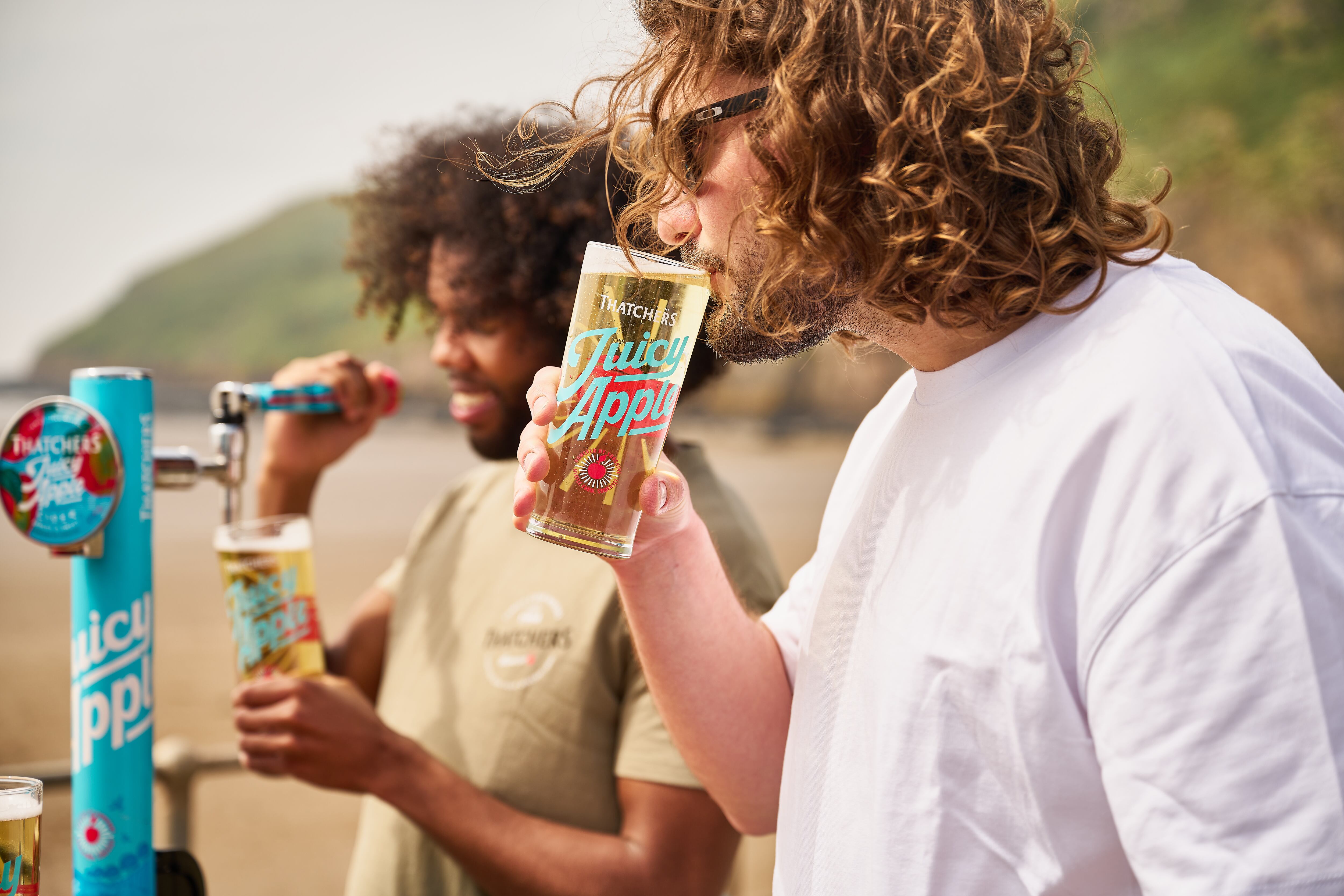
There are a huge range of styles and opportunities to explore, with some wonderful innovation. Cider provides a fabulous opportunity for organic growth – it just needs the trade to buy into the opportunity. Give the punters the awareness of the full range of cider’s potential and this potential can be realised.
Apples, apples, apples
For more than a decade, since Magners was in its absolute pomp, apple cider has been in volume decline within the total marketplace. Partly a rebound effect of Magners decline in popularity but mostly a result of the surge of flavoured ciders that entered the market, apple ciders have been the mainstay in terms of volume in the on-trade but without huge innovation or excitement – cloudy / hazy offerings notwithstanding.
Stocking a recognised, trusted brand that customers love, such as Thatchers Gold, can sell an additional 54 pints a week
Thatchers' Gemma Pym
But, as Jack Wignall, category marketing manager at Heineken UK points out, classic and mainstream apple brands still dominate.
He says: “Brands such as Strongbow Original and Inch’s Apple Cider, capture 48% of market share by value and 52% by volume.
“Their dominance is particularly strong in draught format, accounting for 78% of apple cider sales by value and 80% by volume.
“For venues not already tapping into this opportunity, adding a mainstream apple cider on draught could significantly boost sales.”
Promotional content
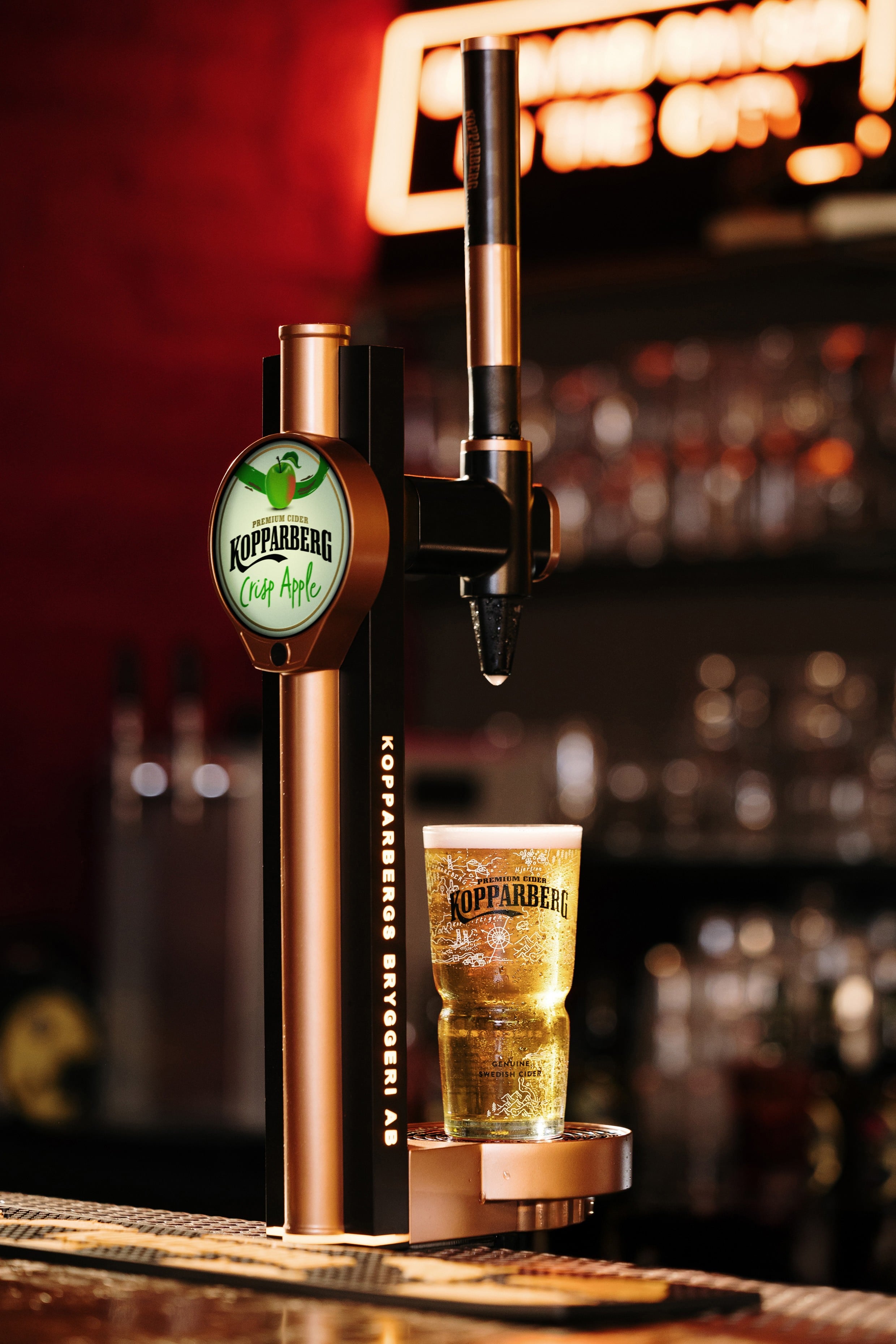
Kopparberg is a proven catalyst to drive footfall
Kopparberg is UK’s best-selling fruit cider brand[1], a proven catalyst for driving footfall, increasing sales and fostering customer loyalty[2].
With its unmistakeably bold fruit flavours, pioneering innovation pipeline and powerful marketing campaigns, Kopparberg has firmly established itself as a must-stock in the on-trade.
New: Kopparberg Crisp Apple
With more 18 to 24-year-old drinkers than any other cider brand[3], Kopparberg is perfectly positioned to bring Crisp Apple to market, in line with a rise in demand for premium apple ciders from younger drinkers. Kopparberg Crisp Apple offers drinkers the much-loved taste of a classic apple cider, balanced with a slightly sweeter profile that the brand is famous for. This exciting new variant will be available in both draught and packaged formats, and is set to bring younger, high-value consumers into outlets. The launch will be backed by a striking PoS kit and impactful activation opportunities.
Stock the proven winners
Don’t forget the big hitters as we move into the summer season. When the warmer weather hits and the sun threatens to come out, outlets fill up with drinkers looking for their favourite brands. Strawberry & Lime on draught has the highest ROS of all fruit draught in the on trade[4], and Strawberry & Lime and Mixed Fruit continue to be first and second most distributed flavours in the on-trade[5].
Set yourself up for a summer of success
Choosing to stock Kopparberg means choosing a brand that’s synonymous with quality, innovation and loyalty. Kopparberg is more than a fruit cider, it’s a brand that resonates with consumers and authentically represents the celebration of life’s best moments, a true market-first that continues to lead.
[1] IRI, Ext Marketplace, Fruit Cider, Value Sales, 52wks to 01.10.23.
[2] Kantar Worldpanel, Alcovision, Total On Trade 30/09/24
[3] Nielsen CGA: Jan-30th Nov 2024
[4] & [5] Nielsen CGA: Jan-30th Nov 2024
To get a great deal on TNT Sports through Kopparberg, click here.
This is confirmed by Gemma Pym, senior category & insight manager at Thatchers UK, who adds: “Stocking a recognised, trusted brand that customers love, such as Thatchers Gold, can sell an additional 54 pints a week, delivering extra cash in the till. Getting it wrong could mean losing a group and watching your revenue walk out the door.”
The majority of apple cider in the UK historically has been made with traditional higher tannin apples grown solely for cider making. These apples create ciders with robustness and boldness. However, consumer tastes are changing, leading to the removal of older orchards of these varieties in favour of eating apples.
“These create softer, easier drinking styles of cider. Tapping into this trend will soon be Kopparberg Crisp Apple, while one of the great successes of 2024 was Thatchers Juicy Apple, as explained by James Palmer, head of on-trade at Thatchers.
“Gen Z are drinking more cider than lager and they are looking for brands that not only deliver on taste but match their sustainability ideology.
“Last year, we launched Thatchers Juicy Apple and early indicators show that it is bringing new drinkers to the cider category. It is made using 100% green electricity, including power from the 3,000 solar panels on the roof of Myrtle Farm where Thatchers is made, which means it is as good for the environment as it tastes in the glass.”
Premiumisation & crafted
The great change within the apple segment over the course of the past few years, of course, has been its premiumisation.
The Westons Cider Report is an annual public compilation data trends with its top tier of premium products being classified as ‘crafted’. It’s primary author, business improvement manager Tim Williams says: “The on-trade is currently seeing the crafted segment having its highest ever share of volume, standing at 13.4% – an increase of 1.5% over the past 12 months.”
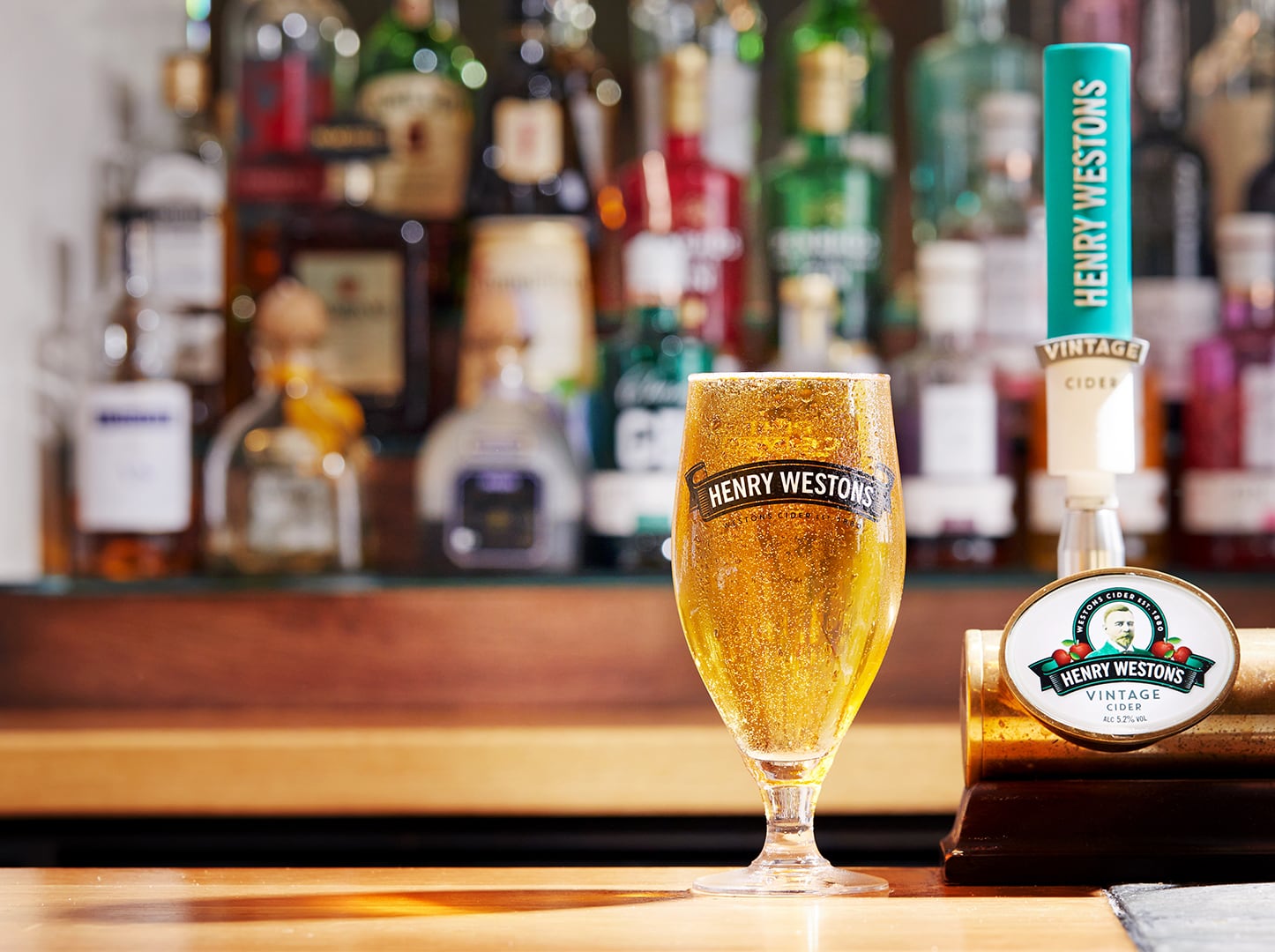
Among larger brands, Aspall has longed played in this space, although it has now been joined at the table by Westons thanks to the successful launch of its Henry Weston Vintage 5.2% ABV draught cider in the on-trade.
A natural sibling to its full fat 8.2% ABV behemoth in the off-trade, Vintage ciders could be the next big thing, as Darryl Hinksman, head of business development, explains: “In the on-trade, we know consumers are willing to pay more for high-quality drinks across a range of occasions.
We’re tired of cider being viewed as cheap or rough or only for the summer
Pulpt's Al Collar
“However, cider at its core hasn’t quite provided clear reasons for consumers to perceive it as special and worth paying more for. ‘Vintage’ holds a unanimously positive association in consumers' minds, helping to connect a single year’s apple harvest with other authentic cider cues, such as slow aging and a carefully crafted cider-making process.”
If we look further into crafted segment, different types of producer emerge. Some, such as Sheppy’s and Sandford Orchards, rely very much upon tradition allayed to great taste and accessibility.
The crafted segment is very much apple-dominated and allows individual orchards or event apple varieties to be showcased, as David Sheppy, managing director, Sheppy’s Cider and chairman of The National Association of Cider Makers (NACM) alludes to.
“Sheppy’s Redstreak Cider is a fantastic example of a single-variety cider that delivers bold fruitiness with a naturally sweeter profile, appealing to those who enjoy traditional quality, yet easy-drinking ciders,” he says.
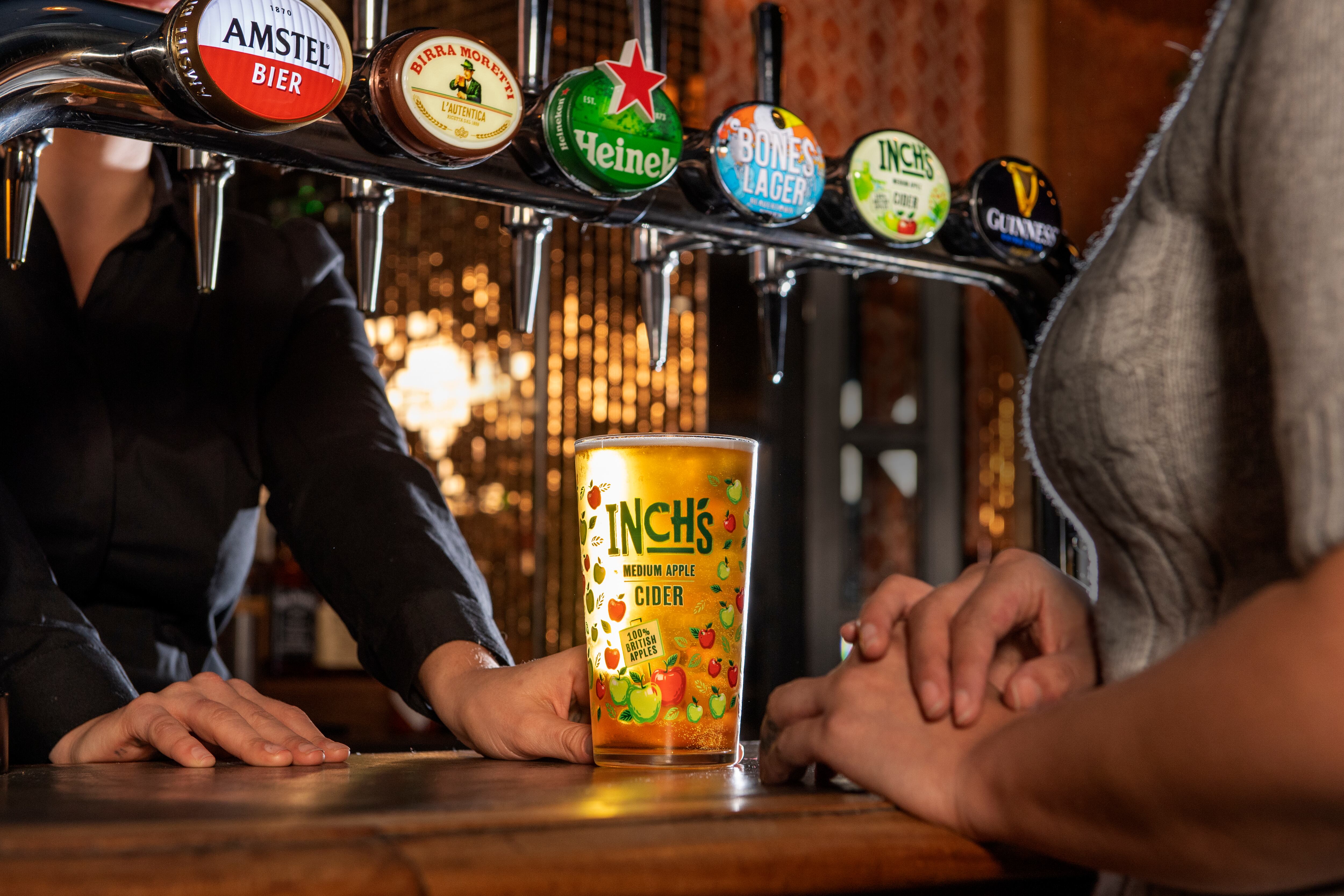
However, we are also beginning to see the emerge of modern craft brands, too. These eschew the bucolicness of traditional cider in favour of a language, aesthetic and ethos more closely aligned to the energy of craft beer.
One brand in particular is leading here – Pulpt. With major off-trade listings behind them, co-founders Al Collar and Jim Wakefield are now targeting the on-trade.
And as self proclaimed ‘New Fashioned’ cider makers, Pulpt is making a stand against some of the negative aspects of cider’s perceptions, explains Collar.
“We’re tired of cider being viewed as cheap or rough or only for the summer,” he begins.
“We’re frustrated by the lack of vision or aspiration among many. We think the lack of transparency and honesty among some within our industry does cider no favours. That’s why we never use cheap, tasteless apple juice concentrate, we never use misleading language and we include the ingredients listing on our packaging.”
Promotional content
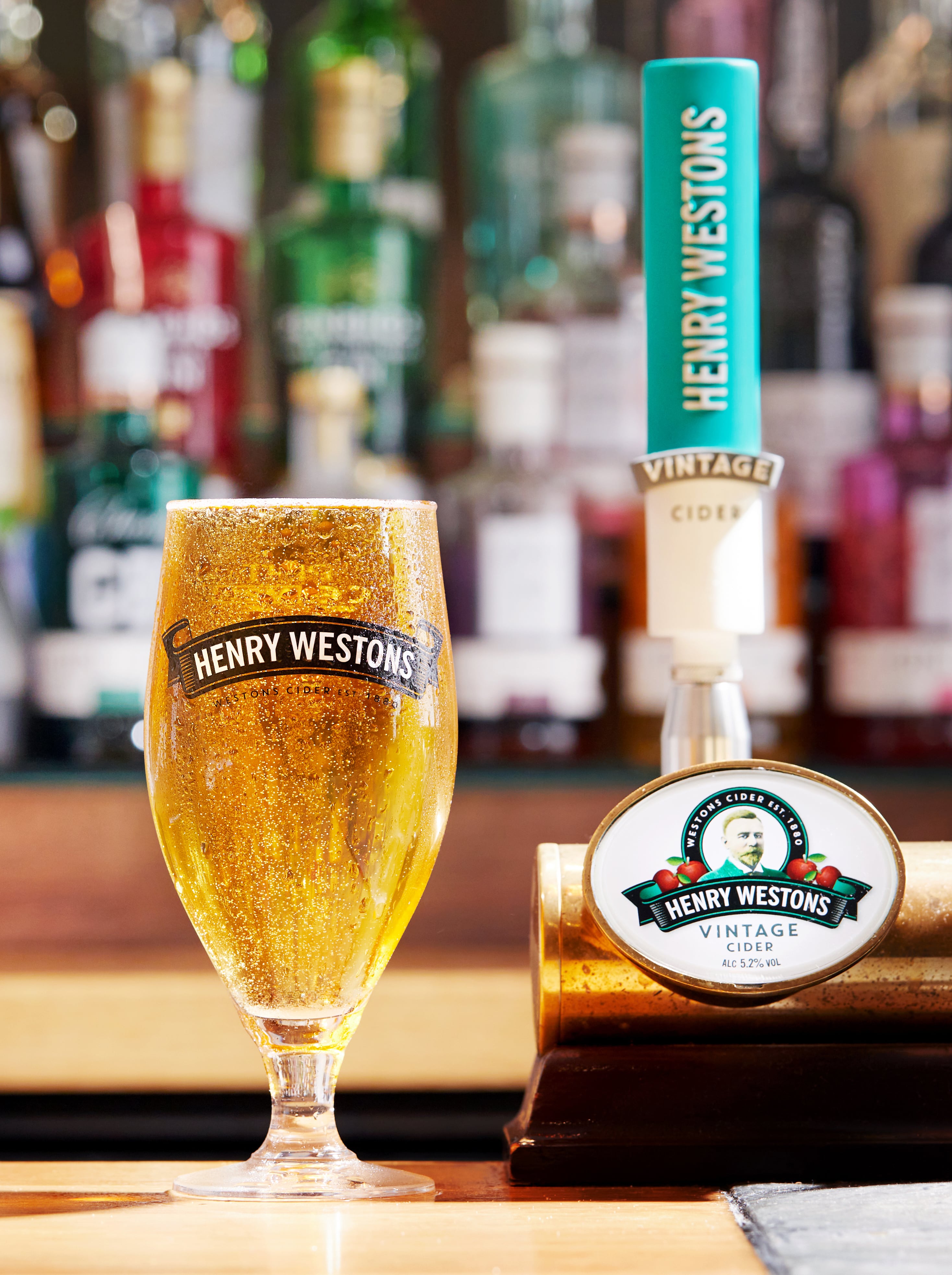
Get your cider range right with Westons
Westons head of business development Darryl Hinksman says: “It’s a challenging time for pubs and bars but there are green shoots of hope as we head towards spring.
“Longer days, busier gardens and key sporting moments create the perfect opportunity for venues to cash in on Brits’ thirst for a refreshing pint of cider.
“To drive sales, it’s more important than ever that pubs get their cider range right – starting with premium apple cider on draught.
“Draught cider accounts for over 75% of pours, with apple taking the lion’s share. Leading this momentum is Henry Westons Vintage, the UK’s fastest-growing draught cider, which has grown a staggering 107% in volume and 123% in value growth during the past year[1].
“Sporting occasions also provide a major sales boost, making now the perfect time to refresh your range. With major events like the FA Cup final and the British & Irish Lions Tour on the horizon, cider is set for another winning season. Now’s the time to stock up, pour with confidence and make the most of the months ahead.”
[1] CGA Strategy OPMS P12 MAT to 30/11/2024, Top 25 Draught Ciders
You can access Westons Cider Report 2024 by clicking here. For more information on Westons, click here.
Premium world cider
An additional opportunity within the premium space, which is woefully undercapitalised and is a glaring win for someone to exploit, is ‘premium world cider’ on draught.
The UK might be the largest producer and consumer of cider but it is a long way from being the only region that has an old cider heritage or a new appreciation for the fermented apple.
Copying the success of Madri and Cruzcampo, and American craft beer (Sierra Nevada, Stone Brewing, Goose Island, etc.) a decade before, there is a thirst and curiosity of flavours from afar.
More than a quarter of [draught] flavoured cider sales now sit in more premium brands
Westons' Darryl Hinksman
There’s a few offerings already about, notably South African craft pioneers Sxollie, which has been present in the off-trade for almost a decade, and French revolutionary Galipette – bringing the French tradition of slow, wild fermentation with no added sugar into the modern age.
For me, the greatest opportunity has yet to be realised. Although the majority of readers won’t know this, there is a thriving cider scene in the US. Somebody very smart would do well to be contacting the likes of 2 Towns (Oregon), Golden State (California), Original Sin, (New York), Blakes (Michigan) and importing their wares into the country.
Fruit cider – down but not out
The last Westons Cider Report 2024 stated draught flavoured cider, despite a long period of decline, has recently stabilised to represent just 25% of the total draught category, but the premiumisation in apple cider is also evident in fruit cider, describes Hinksman.
He explains: “We’re continuing to see the move from front to back bar for flavoured cider, with premium packaged fruit ciders driving growth from the chillers. Where it is on draught, more than a quarter of flavoured cider sales now sit in more premium brands too, in a significant increase over the past year.”
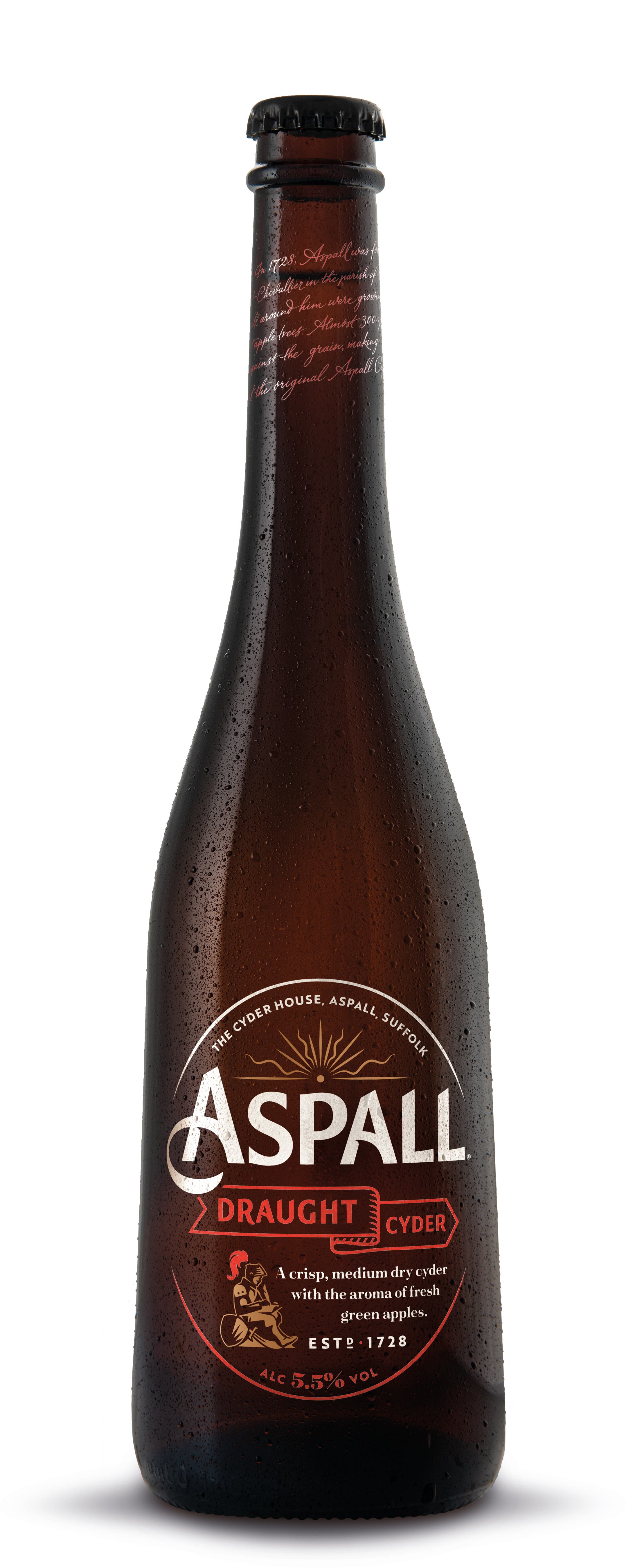
As confirmed by Heineken’s Wignall, if cider is popular enough to warrant a second tap in a venue then insight shows that for maximum sales, this should be a flavoured cider.
He argues: “More mainstream flavoured options, such as Strongbow Dark Fruit or Strongbow Strawberry, are well suited to the majority of wet-led outlets, while more premium pubs should look to have a premium flavoured cider as the second tap, such as Old Mout Berries + Cherries.”
There are still bountiful options within fruit cider, with Kopparberg and Rekorderlig satisfying the sweetest end of the market, with bolder flavoured options, such as Aspall Peronelle’s Blush, emerging into the category. Fruit cider might be down, but it certainly isn’t out. Bottled stock in the fridge is a must, especially if a second tap isn’t given over to fruit.
Low & no options
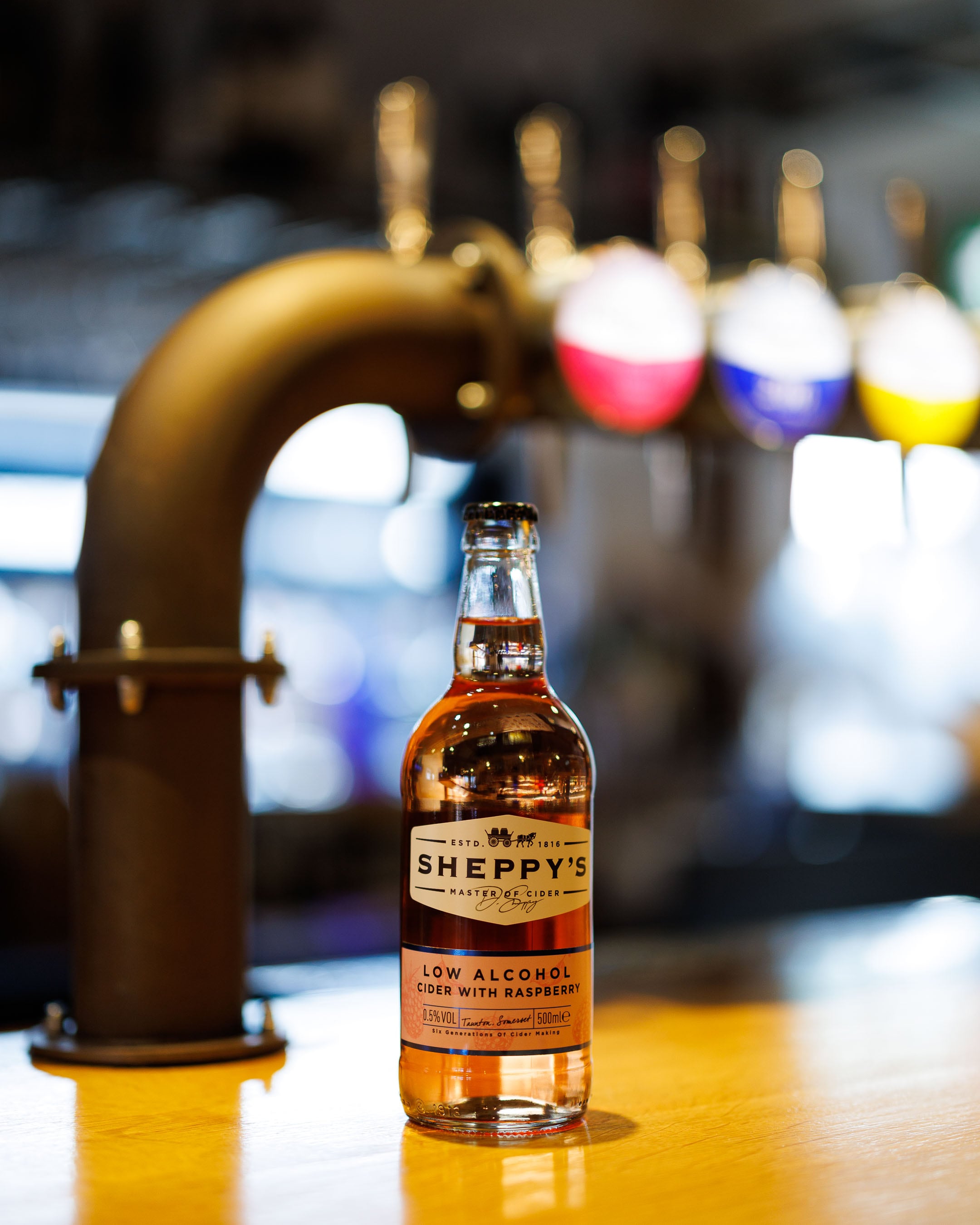
The appetite for low & no alcohol cider is increasing, just as we have observed with beers, wines and spirits. Sheppy says operators should also be keep in mind that over a third of UK drinkers (38%) are now consuming low & no products while young consumers in particular are calling on pubs to offer wider ranges of low & no alcohol drinks.
He adds: “We recognise the hospitality industry is doing a lot already to increase choice, and stocking a wide range of low & no alcohol products is a good opportunity to encourage growth for the cider category.
“Sheppy’s Classic Low Alcohol Cider has an avid following and offers a high-quality, full-flavoured experience at just 0.5% ABV.”
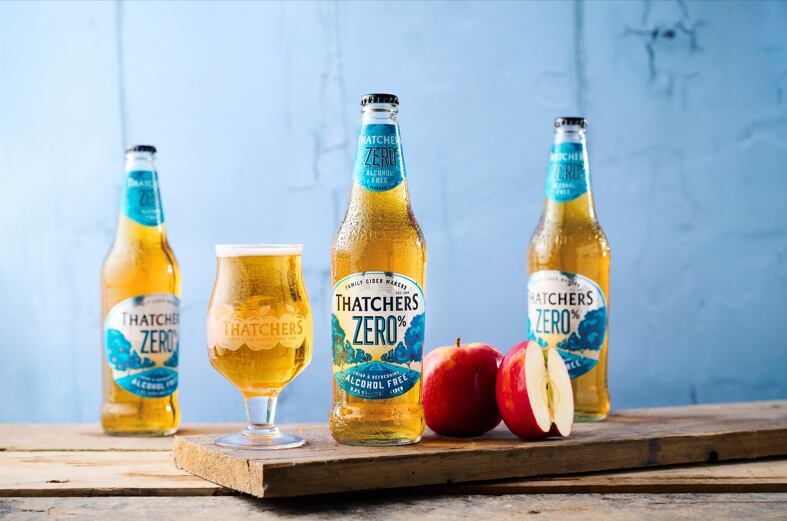
Kopparberg continues to dominate the alcohol-free cider market, cementing its place as the ultimate choice for a new generation of drinkers with moderation in mind.
But a whole host of low & no alcohol ciders have emerged in the past two years, with my pick of the bunch being Chance Clean Cider (0.5% ABV) and Cotswold’s Cider Co Phantom of the Orchard (1% ABV). Available in 330ml bottles, they provide the perfect option for the fridge.
Better BIBs
Kegged ciders don’t provide the only opportunity for draught dispense for operators, of course. Enter the much maligned bag-in-box (BIB) options.
For many consumers, this method of dispense is too synonymous with ‘rough’ cider and to an extent not without good reason. Sometimes the issue lies with the maker – this pack type is a favourite of very traditional makers who don’t always have a strong grasp of quality assurance.
More often than not, however, the issue is in the pub itself. BIBs should be treated the same as cask ale – kept in the cellar. How often is a herniated BIB allowed to sit sweltering under the lights or on top of the refrigerator behind the bar. Don’t let anyone tell you that’s how it’s supposed to be served – it’s not. Look after the cider and it’ll look after you.
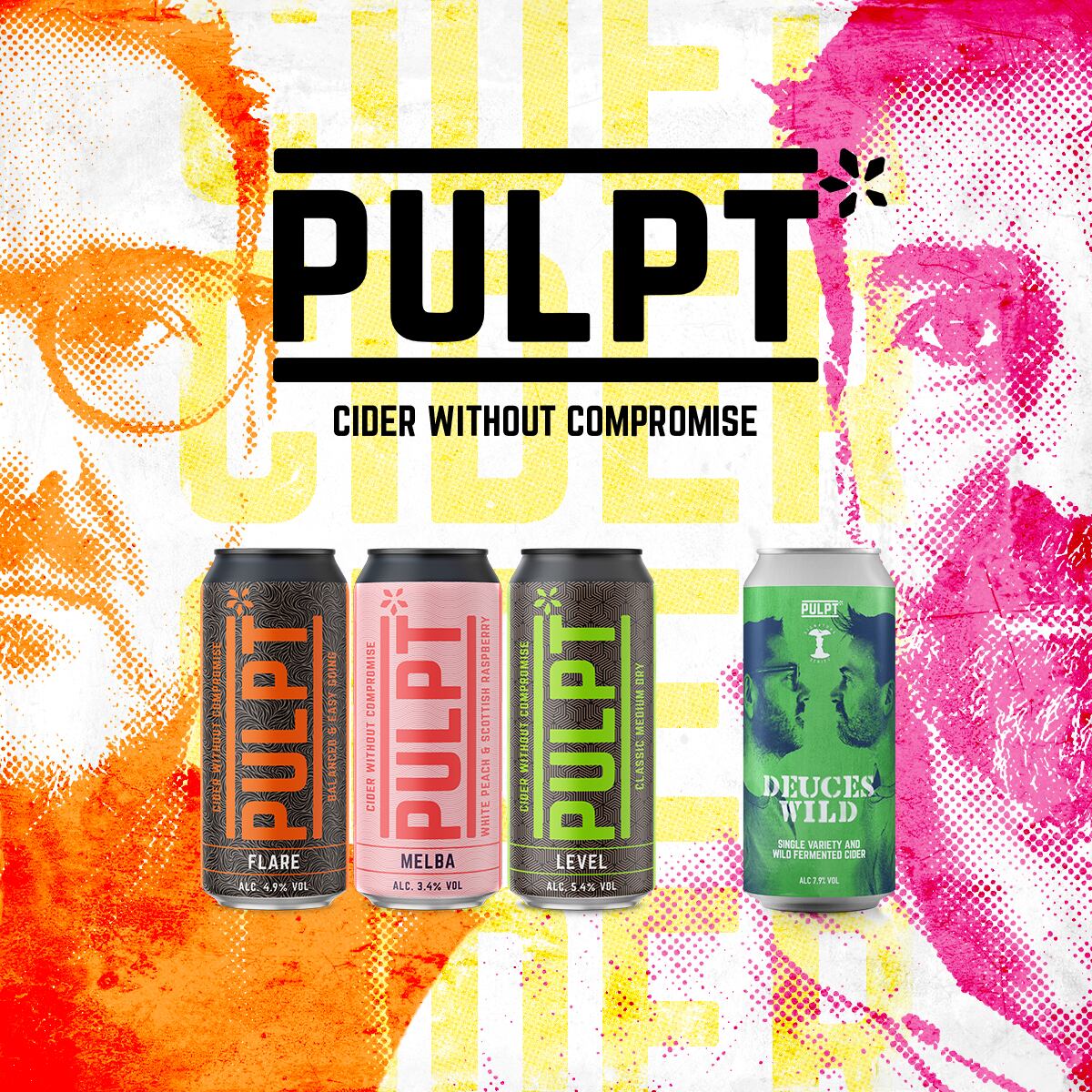
Food and cider pairing
Cider provides a woefully underutilised opportunity for creative food matching, whether formal or informal.
Molson Coors Beverage Company beer & cider Champion and cider pommelier Paul Rudge thinks cider is another great way for outlets to improve their offering, noting that: “Cider is versatile and opens up lots of opportunities for food pairings in much the same way as wine does.
“Premium ciders, in particular, are a natural accompaniment to meals and a good way to drive incremental sales, so think about how options such as Aspall Cyder can complement a food menu.”



